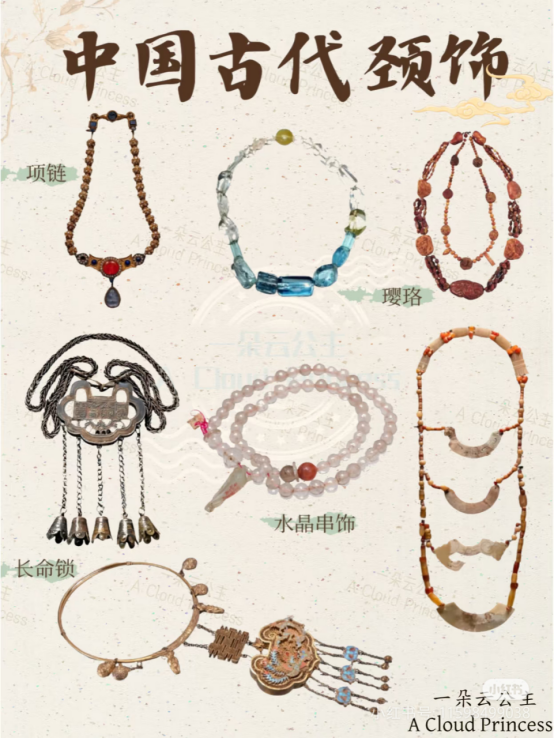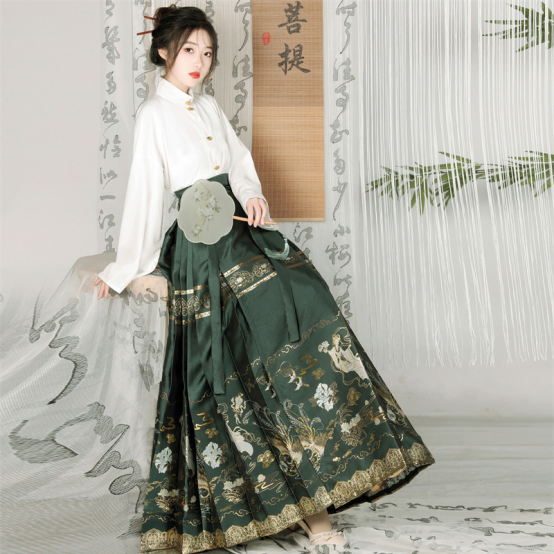The history of traditional Chinese clothing dates back to ancient times. Each dynasty had typical Hanfu styles and design characteristics. The historical changes of Hanfu not only reflect the production technology of the time, but also embody the unique social aesthetic concepts. Today, Hanfu is not only one of the witnesses to the development of national culture, but also a clothing style full of fashionable charm.

Traditional Chinese Clothing Fashion in the Pre-Qin Period
During the Pre-Qin Period, the typical fashionable style of Hanfu was shenyi (a form of traditional Chinese garment that integrates the upper and lower parts). This garment, which combines the upper garment and the lower skirt into one piece, laid the foundation for the development of Hanfu styles.
The cutting of shenyi strictly adhered to ritual systems. The wide cuffs symbolized the harmony of the heavenly way, and the overlapping collars also symbolized the uprightness of the earthly way.
Limited by the production technology of the era, shenyi was mostly made of linen or simple silk satin. A key feature of shenyi was that it was stitched from twelve pieces of fabric, corresponding to the twelve months of a year. This design concept is exactly the embodiment of the ancient Chinese philosophy of “the unity of man and nature”.

Traditional Chinese Clothing Fashion in the Han Dynasty
By the Han Dynasty clothing, shenyi had further developed and evolved into two fashionable styles: the quju robe (a robe with curved hems) and the zhiju robe (a robe with straight hems).
The quju robe was characterized by its placket wrapping around several layers, forming an elegant spiral line. It was not only aesthetically pleasing but also practical for keeping warm.
With the progress of textile technology during this period, a large number of jacquard brocades and cotton materials were used in clothing production.

Chinese Clothing Fashion in the Tang Dynasty
When Hanfu evolved into the Tang Dynasty, there were great innovations in clothing. The typical fashionable style was mainly the qixiong ruqun (a short jacket with a skirt tied above the chest).
The popularity of qixiong ruqun broke the conservative pattern of previous clothing. The skirt was tied above the chest, and a semi-transparent gauze shirt was worn over it. This created the unique atmosphere of openness and inclusiveness of the Tang Dynasty Clothing.
It was the most remarkable fashion reform in the history of Chinese skirts. Textile technology also made great innovations in the Tang Dynasty. The types of fabrics became abundant. Ranging from light and thin gauze to thick brocade, and from simple patterns to complex ones, all kinds of fabrics were available. This created an unprecedented golden age for the development of Tang Dynasty clothing.

Chinese Clothing Fashion in the Song Dynasty
By the Song Dynasty Clothing, clothing gradually returned to a simple and plain style. Elegance and minimalism became the fashion keywords of Hanfu in this period.
The classic styles included the Song-style beizi (a loose outer garment) and pleated skirts. Matching beizi with pleated skirts showed women’s fresh and gentle temperament.
For men in the Song Dynasty, the daopao (a robe with a straight cut and wide sleeves) was popular, which fully reflected the elegant demeanor of scholars.
In the Song Dynasty, fabric production reached a new height. The weaving technology of Luo (a type of thin silk fabric) was particularly outstanding. The Song-style Luo was both light and thin, and strong and durable. It was a major achievement in the development of Chinese fabrics.

Chinese Clothing Fashion in the Ming Dynasty
The evolution of Hanfu’s fashionable charm never stopped. By the Ming Dynasty Clothing, the fashionable style of Hanfu had developed into the aoqun combination (a jacket with a skirt). The matching of an upper jacket and a lower mamian skirt (a traditional Chinese skirt with side pleats) formed the main image of Ming Dynasty clothing. It was a classic work in the history of traditional Chinese skirts.
The mamian skirt was usually made of gold-woven brocade. The skirt panels formed a regular alternation between smooth surfaces and pleats. When walking, the skirt panels swayed and fluttered; when stationary, it looked dignified and neat, exuding a magnificent aura.
In the Ming Dynasty, cotton cultivation became widely popular. Cotton cloth gradually became the daily clothing material for ordinary people. At the same time, silk weaving technology did not fall behind and became more sophisticated. Various fine and complex silks and satins continued to emerge, becoming the main material source for Ming Dynasty clothing.

Common Q&A About Traditional Chinese Fashionable Hanfu
After thousands of years of development, the fashionable charm of Hanfu has not only retained its traditional essence. Against the backdrop of today’s cultural revival, Hanfu has undergone further aesthetic innovations. It has developed more Hanfu styles suitable for modern people’s needs.
The popularity of Hanfu has also given rise to many questions about Hanfu among people. We will briefly answer some of these questions here:
- Which dynasty mainly wore long robes as daily clothing?
Answer: Starting from the Han Dynasty, long robes became the main clothing worn by people of all classes and groups. Typical styles include quju robes and zhiju robes.
2. Which dynasty had a great influence on women’s clothing fashion?
Answer: Overall, the Tang Dynasty had a great influence on women’s clothing fashion. This can be seen from the openness, inclusiveness and bold pursuit of aesthetics of Tang Dynasty women. In particular, various innovative women’s clothing styles, such as the qixiong ruqun, were a major breakthrough in traditional women’s clothing, showcasing the prosperous atmosphere of the Tang Dynasty.







